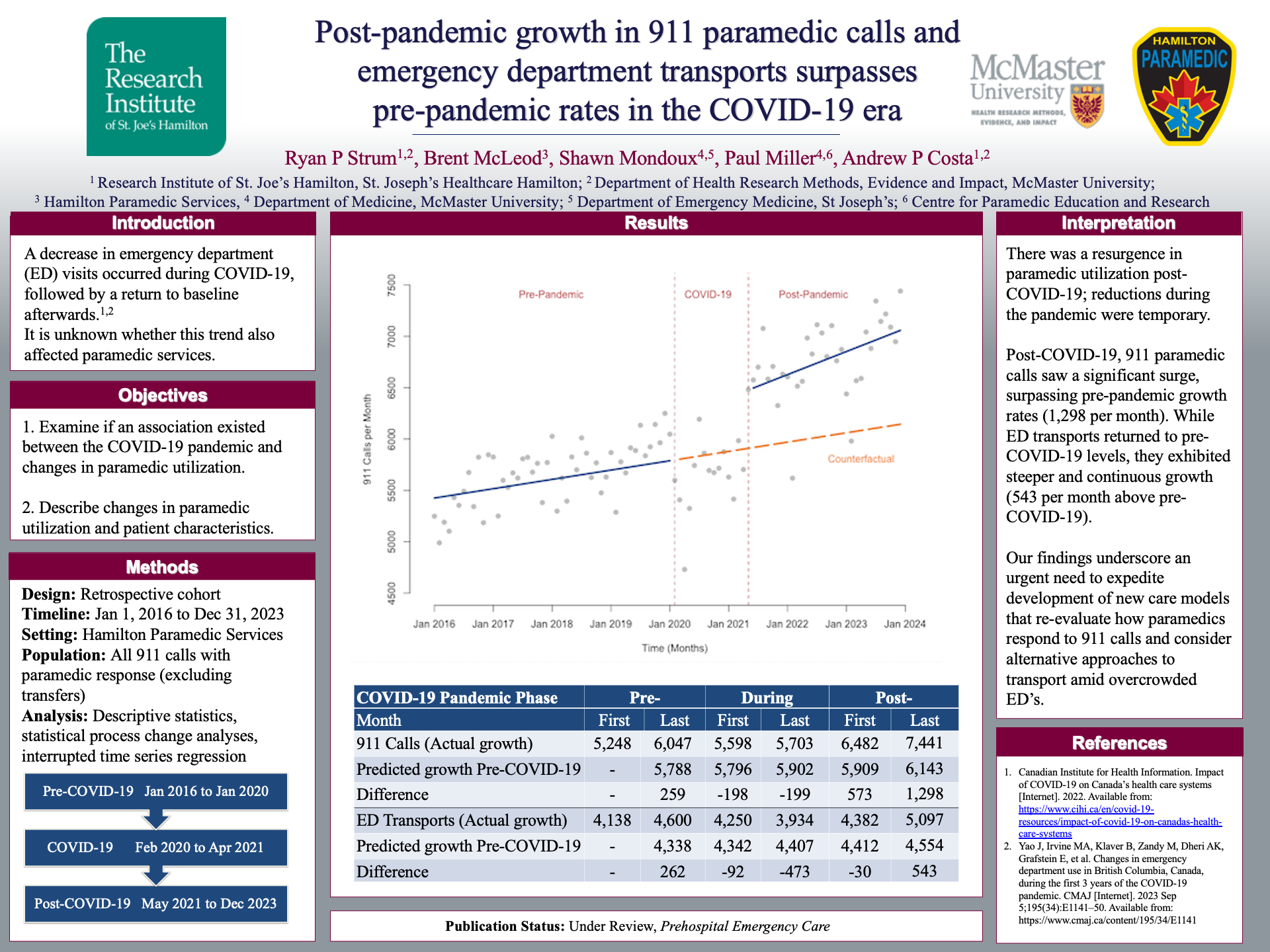 |
|
Post-pandemic growth in 9-1-1 paramedic calls and emergency department transports surpasses pre-pandemic rates in the COVID-19 era: Implications for paramedic resource planning Introduction The COVID-19 pandemic led to a decline in emergency department (ED) visits and a subsequent return to baseline pre-pandemic levels. It is unclear if this trend extended to paramedic services and if patient cohorts accessing paramedics changed. Objective We examined trends and associations between paramedic utilization and the COVID-19 timeframe. Methods We conducted a retrospective cross-sectional study using paramedic call data from the Hamilton Paramedic Services from January 2016 to December 2023. We included all 9-1-1 calls where paramedics responded to a medical incident and excluded paramedic interfacility transfers. We computed lines of best fit in the pre-pandemic period and compared predictions to actual utilization volumes post-pandemic. We used an interrupted time series regression model to determine the association between pandemic timeframes (pre-, during-, post-COVID-19) and paramedic utilization (9-1-1 calls and ED transports), with testing for annual seasonality. Results During the study timeframe, 577,278 calls for paramedics were received and 413,491 (71.6%) were transported to the ED. Post-pandemic, 9-1-1 calls exceeded predicted pre-pandemic levels by 1,298 per month, while ED transports exceeded by 543 per month. The pandemic significantly reduced monthly 9-1-1 calls (-588.2, 95% CI -928.8 – -247.5) and ED transports (-677.3, 95% CI -927.0 – -427.5). Post-pandemic, there was a significant and sustained resurgence in monthly 9-1-1 calls (1,208.0, 95% CI 822.1 – 1,593.9) and ED transports (868.8, 95% CI 585.8 – 1,151.7). Both models exhibited seasonality. Conclusion Post-pandemic, 9-1-1-initiated paramedic calls experienced a substantial increase, surpassing pre-pandemic growth. ED transports returned to pre-pandemic levels but with a steeper and continuous growth rate. The resurgence in paramedic utilization post-COVID-19 emphasizes an urgent necessity to expedite development of new care models that address how paramedics respond to 9-1-1 calls and transport to overcrowded ED’s. |
Ryan Strum is a part time Assistant Professor in the Department of Health Research Methods, Evidence and Impact (HEI) at McMaster University, and an advanced care paramedic. Ryan's research focuses on classifying and describing avoidable emergency


